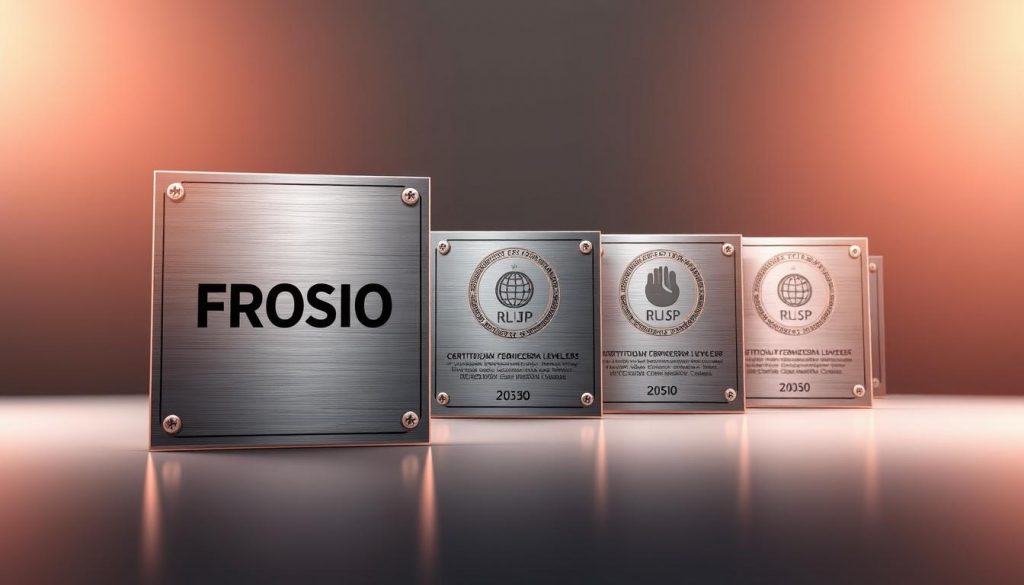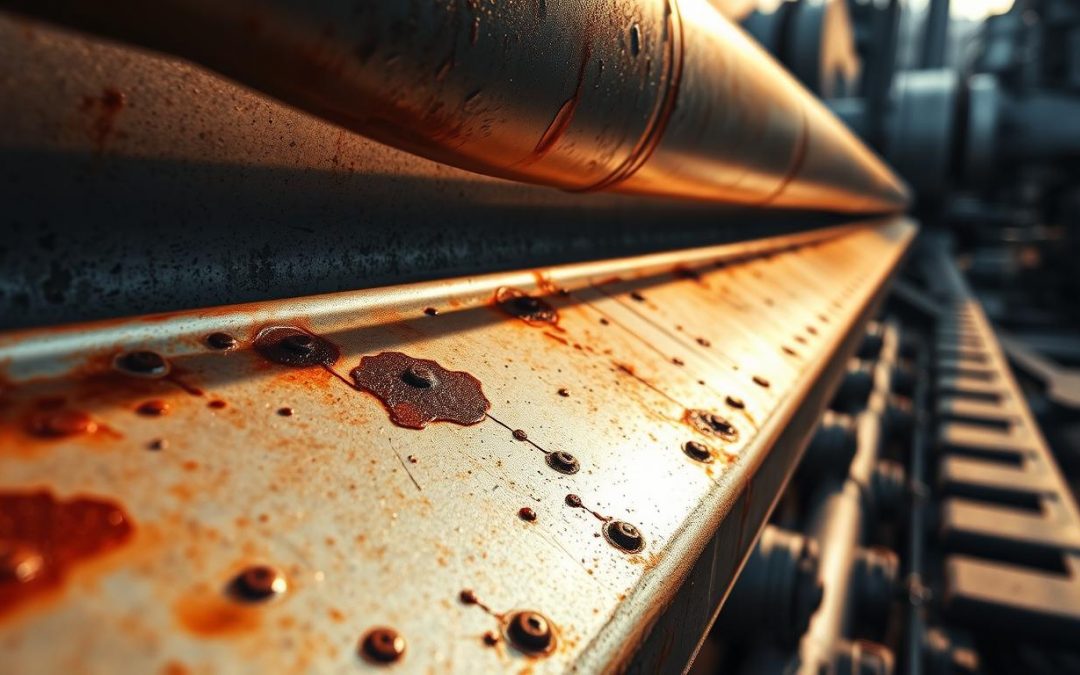Frosio Offshore began in Norway in 1986 as a unified certification for inspectors in surface treatment and protective coatings. It grew into an international benchmark that many owners and contractors trust.
The guide gives a clear understanding of how this certification validates inspection competence and how it complements AMPP credentials used by U.S. teams. You’ll see why Norway’s maritime and energy legacy shaped rigorous standards for durable, reliable performance.
This short introduction maps what to expect: a snapshot of the certification pathway, practical checklists, and quality controls inspectors use in the field. It focuses on real project needs so teams can reduce rework, protect warranties, and plan training with confidence.
Key Takeaways
- Why it matters: Norway set a high bar that improves lifecycle outcomes for major structures.
- Certification clarity: Learn how inspection credentials back measurable quality on site.
- Practical alignment: Align project specs with proven standards to speed handover.
- Field-ready tools: Expect checklists and controls inspectors apply daily.
- Complementary systems: See how Frosio Offshore pairs with AMPP to cover both inspection and engineering needs.
Why Norway sets the bar for protective coatings and corrosion control
The demands of Norway’s energy sector shaped rules that now guide global corrosion control. NORSOK M-501 and related frameworks capture strict requirements for material selection, surface preparation, paint application, and inspection.
This legacy grew from the North Sea, where extreme marine exposure forced repeatable, auditable processes. Operators required consistent results, which raised expectations across the whole industry.
Norwegian practice links design, surface treatment, coating choice, and inspection into a closed loop. Tight control of environmental conditions and surface cleanliness helps teams meet specs without constant rework.
Those standards now guide land-based industries that need dependable corrosion protection. The outcome is higher long-term quality and fewer premature failures even under schedule and budget pressure.
- Repeatable quality: documented procedures and inspection rigor.
- Closed-loop approach: design through testing and verification.
- Practical benefits: less downtime and better lifecycle performance.
Understanding FROSIO: origins, purpose, and where it applies
When coating failures cost projects time and money, industry specialists built a unified inspection pathway to reduce risk.
From 1986 to a global reference
Launched in 1986, frosio aimed to standardize how coating inspection is done. It combined classroom theory with hands-on checks so inspectors learn what matters on site.
What the certification proves
This certification shows competence in key areas of surface treatment. Inspectors demonstrate skills in cleanliness, profile, environmental control, and record keeping.
“A shared standard for inspection reduces rework and gives owners confidence in long-term performance.”
Where it is used
The program is common in shipbuilding, marine and energy work, roads, rail, and heavy plants. It targets locations where corrosion risk is high and access is limited.
| Area | Primary focus | Typical inspectors | Benefit |
|---|---|---|---|
| Shipbuilding | Coating adhesion & cleanliness | Coating inspectors | Fewer repairs at sea |
| Energy & power | Long-life protection | Field and plant inspectors | Extended asset life |
| Infrastructure | Environmental resistance | Site inspectors | Lower maintenance cost |
Frosio Offshore: corrosion challenges, surface preparation, and coating systems
Structures in sea air face unique corrosion drivers that shape how we prepare and protect steel. This section outlines practical steps for tackling salt spray, immersion, and cyclic wet/dry exposure.
Harsh marine environments
Continuous salt spray and immersion accelerate corrosion. Cyclic wet/dry exposure widens fatigue risks and underfilm corrosion.
Result: choose systems that match the environment defined in ISO 12944 and verify pre-qualification where IMO PSPC or NORSOK M-501 apply.
Steel substrates and surface preparation
Success begins with cleaning and proper blast standards. Remove oil, salts, and mill scale to achieve the specified profile.
Tip: measure profile and test for contaminants before you coat. Poor surface preparation causes most failures.
Protective coating systems and application methods
Select coatings based on exposure category and validated systems in ISO 12944 Part 5. Application control matters: mixing, induction times, spray technique, and stripe coats all affect coverage at edges and welds.
Follow documented methods and holdoffs to reduce rework and improve long-term performance.
Measuring success
Field verification should include dry film thickness, adhesion, and visual acceptance criteria. Check ambient conditions and dew point to avoid adhesion loss.
Sign-off requires: DFT readings within tolerance, adhesion above spec, and no visible defects.
| Challenge | Key control | Typical check | Benefit |
|---|---|---|---|
| Salt spray / immersion | Pre-qualified system | System validation per ISO 12944 / NORSOK | Longer service life |
| Contaminated substrates | Blast & cleanliness | Profile and salt tests | Better adhesion |
| Poor application | Method control | Mix, pot life, spray checks | Consistent film thickness |
FROSIO certification levels and pathways: Level I, Level II, and Level III
Certification paths divide into three clear tiers that match an inspector’s skills and field history.

Level I (White), Level II (Green), Level III (Red)
Level I (White) suits newcomers with little or no relevant experience. The certificate is valid for five years and is ideal for those starting in surface treatment or related trades.
Level II (Green) requires a minimum of two years of relevant experience. Holders often act as competent on-site inspectors and support leads.
Level III (Red) requires at least five years of relevant experience with a minimum of two years documented inspection experience. Level III holders tend to lead inspection teams and mentor junior coating inspectors.
Training, exams, and documentation
The pathway includes an 80-hour training program combining theory and hands-on work. Candidates must pass both theoretical and practical exams to earn a certificate.
After passing, submit the reference form that documents dates, project types, owners, and contact details. FROSIO uses this record to confirm the awarded level.
- Validity: All certificates last five years.
- Renewal & upgrades: Renew or upgrade as you log more experience.
- Lost or expired: Contact FROSIO for reissue or renewal guidance.
“Higher tiers combine proven experience with leadership responsibility on complex projects.”
How FROSIO inspection works in the field: from pre-inspection to final report
Field inspections start long before paint hits steel — success depends on planning and documented checks. A clear, repeatable process links specifications to measurable outcomes and better quality.
Pre-inspection essentials
Start by reviewing specifications and the ITP to confirm hold and witness points. Verify that gauges and probes have up-to-date calibration certificates.
Inspectors check preparation steps — cleanliness, blast profile, and salt tests — before the first coat. No application can fix poor preparation.
Checks during application
During application, monitor ambient conditions, batch numbers, mixing, thinning, and pot life. Record stripe coats, edge retention, and wet film checks to control the process.
These in-process controls support uniform coverage and help reach target film thickness while following approved methods and safety rules.
Post-application verification
After curing, perform dry film thickness spot checks, adhesion testing where specified, and holiday detection for linings. Use visual acceptance criteria to confirm appearance.
Document non-conformities with root cause notes, corrective actions, and re-inspection steps. All readings, photos, and sign-offs go into a daily report and the final dossier as a project reference.
“Calibrated tools and clear records turn field checks into traceable quality that owners can trust.”
| Stage | Key action | Typical check | Benefit |
|---|---|---|---|
| Pre-inspection | Specs & calibration review | ITP confirmation, certificates | Reduced rework |
| During application | Process control | Ambient logs, wet film tests | Consistent coverage |
| Post-application | Verification & closeout | DFT, adhesion, holiday detection | Warranty-ready quality |
Tip: Keep a tight chain of custody for records. That traceability is the reference owners use for warranty and future maintenance planning.
Compliance and quality assurance: mitigating risk and extending asset life
Reference areas turn project specifications into verifiable proof that work meets standards.
ISO 12944 Parts 7 and 8 set the rules for these reference zones. They must be accessible, reflect typical exposure, and carry the label: “Reference area: Do not over-coat or paint.” All parties agree on location, number, and size before work begins.
Reference areas per ISO 12944-7/8
Inspectors review every step in the reference area: steelwork, cleaning, blast profile, ambient conditions, application, curing, and the finished system. Stakeholders then sign off to lock in expected performance.
- Maxima by structure size: from 3 areas for
- Labeling & access: areas must remain available for future inspection and maintenance checks.
- Joint agreement: owners, contractors, and inspectors confirm that the reference meets specifications before full rollout.
Documentation, traceability, and training
Good documentation ties the reference area to daily reports, calibration records, photos, and non-conformance logs. That traceability supports warranty discussions and future maintenance plans.
Continuous training keeps inspectors current with standards and guidelines so inspections stay consistent across projects. This reduces disputes and extends asset life through predictable quality control.
“Agreed reference areas align expectations early and make performance measurable.”
Mapping FROSIO practices to global standards: ISO 12944, NORSOK M-501, and IMO PSPC
Aligning field checks with international standards removes guesswork from specification and acceptance. This mapping shows which parts and test methods inspectors must reference when verifying paint systems and execution.
ISO 12944 parts 1–9: a full roadmap
ISO 12944 guides teams from environment classification (Part 2) through design (Part 3) and surface preparation (Part 4). Parts 5 and 6 define protective paint systems and lab performance methods used for pre-qualification.
Parts 7 and 8 cover execution, supervision, and maintenance specs. Part 9 focuses on harsh exposures and links lab tests to field performance for offshore-related work.
NORSOK M-501: consolidated offshore requirements
NORSOK M-501 gathers offshore rules for material selection, surface prep, and application. It adds requirements for thermally sprayed metallic coatings and sprayed passive fire protection.
Annex A lists qualified systems and supports pre-qualification paths that reference ISO 12944 Part 9 and Part 6 testing.
IMO PSPC: tanks, verification, and pre-qualification
IMO PSPC mandates verification for ballast and cargo oil tanks. It sets DFT measurement protocols and requires documented pre-qualification methods in its annexes.
Using PSPC testing and ISO lab methods reduces the risk when selecting coating systems for confined marine spaces.
- Practical tip: reference recognized parts and approved systems in project specs rather than bespoke, unvalidated methods.
- Inspector role: apply the same traceable records and checks that tie field readings to the referenced standards.
- Pre-qualification: use ISO Part 6, Part 9 (via NORSOK), and PSPC Annex 1 to de-risk system choice.
| Standard | Focus | Typical use |
|---|---|---|
| ISO 12944 (Parts 1–9) | Environment, surface prep, lab & field methods | General project specs and system qualification |
| NORSOK M-501 | Offshore systems, TS coatings, inspection rules | Harsh marine and energy projects |
| IMO PSPC | Ballast/cargo tanks, verification & DFT | Ship structures and confined tank spaces |
FROSIO vs NACE/SSPC (now AMPP): scope, certification, and when to use which
Selecting the correct inspection standard reduces disputes and aligns expectations across owners, contractors, and inspectors.

Geography and focus: coatings inspection versus broader corrosion engineering
AMPP (the NACE/SSPC merger) is widely used in the United States and covers broad corrosion engineering topics and protective coatings.
Frosio is European-rooted and concentrates tightly on coatings inspection competence and field verification systems.
Choosing for projects in the United States: compatibility, client specs, and inspector qualifications
Start with client requirements and the project specification language. Many owners accept either path if the inspector shows clear records and competence.
Teams often blend credentials. AMPP-certified engineers and Frosio-certified coating inspectors complement each other on complex jobs.
- When to prefer AMPP: roles needing broad corrosion engineering and system design.
- When to prefer Frosio: coatings-centric inspection with heavy emphasis on on-site verification.
- Practical tip: reference accepted standards and align inspector qualifications to inspection intensity and audit needs.
“Owners value proven competence, clear records, and adherence to recognized standards more than the brand name of a certificate.”
Conclusion
Combining proven standards with on-site verification closes the gap between specification and real-world coating performance.
Aligning recognized standards with a disciplined inspection process helps teams lock in consistent quality across the surface and surface treatment steps. Use ISO 12944, NORSOK M-501, and IMO PSPC where they fit your scope.
Invest in practical training, clear specifications, and qualified inspector oversight. Control preparation, monitor application, and document each field check so owners can trust the records.
Reference areas, traceable records, and proven methods reduce risk and extend service life. With consistent work on these basics, protective coating systems deliver predictable performance and fewer surprises over the years.

